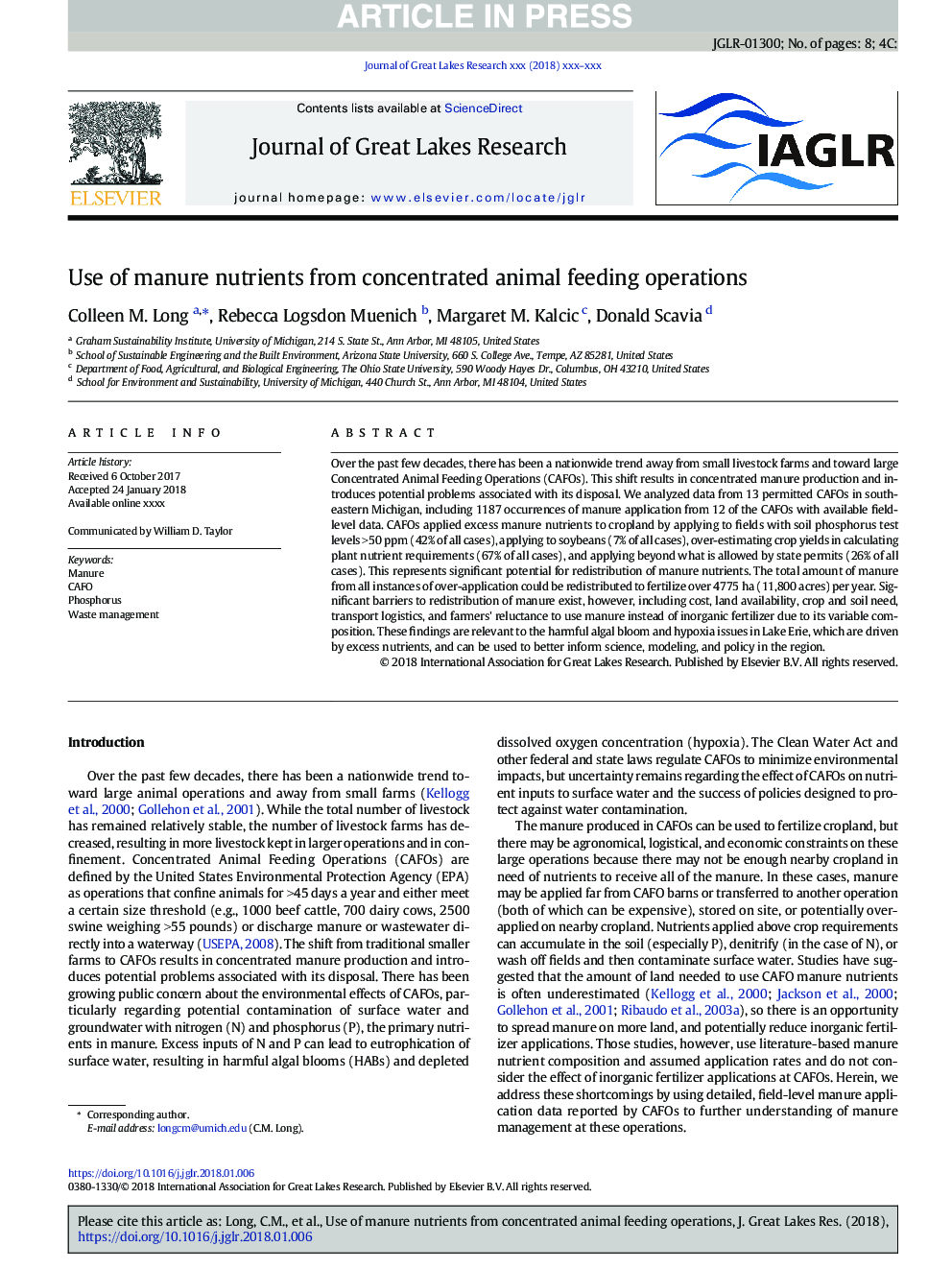| Article ID | Journal | Published Year | Pages | File Type |
|---|---|---|---|---|
| 8849126 | Journal of Great Lakes Research | 2018 | 8 Pages |
Abstract
Over the past few decades, there has been a nationwide trend away from small livestock farms and toward large Concentrated Animal Feeding Operations (CAFOs). This shift results in concentrated manure production and introduces potential problems associated with its disposal. We analyzed data from 13 permitted CAFOs in southeastern Michigan, including 1187 occurrences of manure application from 12 of the CAFOs with available field-level data. CAFOs applied excess manure nutrients to cropland by applying to fields with soil phosphorus test levels >50â¯ppm (42% of all cases), applying to soybeans (7% of all cases), over-estimating crop yields in calculating plant nutrient requirements (67% of all cases), and applying beyond what is allowed by state permits (26% of all cases). This represents significant potential for redistribution of manure nutrients. The total amount of manure from all instances of over-application could be redistributed to fertilize over 4775â¯ha (11,800â¯acres) per year. Significant barriers to redistribution of manure exist, however, including cost, land availability, crop and soil need, transport logistics, and farmers' reluctance to use manure instead of inorganic fertilizer due to its variable composition. These findings are relevant to the harmful algal bloom and hypoxia issues in Lake Erie, which are driven by excess nutrients, and can be used to better inform science, modeling, and policy in the region.
Keywords
Related Topics
Physical Sciences and Engineering
Earth and Planetary Sciences
Earth and Planetary Sciences (General)
Authors
Colleen M. Long, Rebecca Logsdon Muenich, Margaret M. Kalcic, Donald Scavia,
